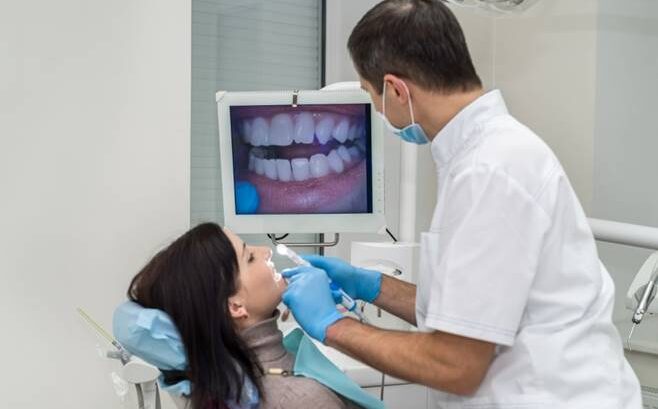What Your Dentist Looks For During an Exam: A Behind-the-Scenes Look
Visiting the dentist is more than just a routine check-up; it’s an essential part of maintaining oral health. But have you ever wondered what your dentist is actually looking for during an exam? Here’s a behind-the-scenes look at what happens when you sit in the dental chair.
- Evaluating Your Medical and Dental History
Before the physical exam begins, your dentist will review your medical history to check for conditions that could impact your oral health, such as diabetes or heart disease. They’ll also ask about any dental concerns, pain, or changes in your oral habits.
- Checking for Cavities and Tooth Decay
One of the primary goals of a dental exam is to detect cavities. Your dentist uses a small mirror and an explorer tool to check for signs of decay, soft spots, or discoloration on your teeth.
- Assessing Gum Health
Healthy gums are crucial for strong teeth. Your dentist will look for signs of gum disease, such as swelling, redness, or bleeding. They may also measure the depth of gum pockets to check for periodontal disease.
- Examining Tooth Alignment and Bite
Your dentist will assess how your teeth align and how your upper and lower jaws fit together. Issues like misalignment or grinding (bruxism) can impact your oral health and may require treatment such as braces or night guards.
- Screening for Oral Cancer
An essential part of any dental exam is checking for signs of oral cancer. Your dentist will examine your tongue, cheeks, throat, and the roof of your mouth for unusual sores, lumps, or discoloration.
- Inspecting Dental Restorations
If you have fillings, crowns, or other restorations, your dentist will check them for wear and tear to ensure they are still intact and functioning properly.
- Taking X-Rays (If Needed)
Dental X-rays help your dentist see beneath the surface to identify issues such as impacted teeth, bone loss, infections, or deep cavities that may not be visible to the naked eye.
- Evaluating Jaw and TMJ Function
Your dentist may assess your temporomandibular joint (TMJ) to check for pain, clicking, or limited movement, which could indicate TMJ disorder.
- Providing Professional Cleaning and Preventative Advice
While not always part of the examination itself, most visits include a professional cleaning to remove plaque and tartar buildup. Your dentist or hygienist will also offer tips on improving your oral hygiene routine.
A dental exam is a comprehensive assessment designed to keep your teeth and gums healthy. By understanding what your dentist looks for, you can take a proactive approach to your oral health and address issues before they become serious. Don’t skip your regular check-ups—your smile depends on them!

